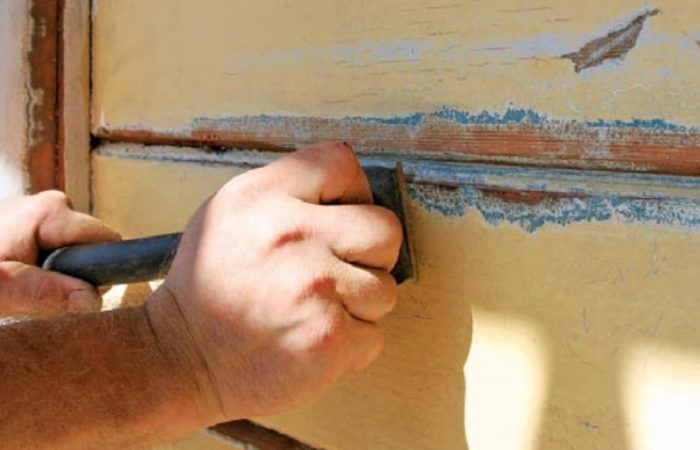There’s No Escaping the Scraping
Washing, scraping, sanding, patching, and priming are dirty, difficult jobs that can make exterior paint last twice as long.

Synopsis: A newly painted exterior is one of the most instantly gratifying improvements you can make on a home, which means that the difference between a good-quality paint job and a poorly executed one is not always obvious at first. But without the right preparation, the envy of the neighborhood can quickly become an embarrassing eyesore as the effects of sun, wind, and rain have their way with a poorly prepared surface. Not only has the paint failed at its primary purpose (to beautify and protect), it now stands as a huge obstacle where future painting is concerned. Laying the foundation for a lasting exterior paint job is a lot of work: The house should be washed, scraped, sanded, repaired, primed and caulked, in order. With careful planning, a little knowledge and yes, some extra hard work, these tasks can be completed in such a way as to let the paint do the best job it can before surrendering to old age. Here a seasoned painter and remodeler from the Bay Area shares his tips for getting these difficult and dirty jobs done right. The article includes sidebars on paint removal options and lead-paint safety.
When it comes to exteriors, the word painting can be misleading because it refers only to the last step of an important process. Although this deception can come in handy when luring your friends into servitude (hint: the shrewd recruiter never says, “Want to help me scrape my house this weekend?”), it leaves a lot to interpretation where prep work is concerned.
If exterior paint has a job, it is to protect a house from the damaging effects of sun, wind, and rain, and look good doing it. If you fail to provide paint with good working conditions, like any employee, it will become flaky and quit. Properly applied paint can last for years, but don’t expect it to seal cracks, stop peeling layers beneath it, or stick to damaged wood.
A lot has to happen before a house is ready for paint, and one of the biggest challenges is making sure that the work all gets done efficiently and in the right order. The sequence is always the same: clean, scrape, sand, repair, prime, and caulk.
I try to work in one direction around the house, but logistics and weather conditions sometimes dictate where and when I decide to do certain things. This can get confusing. For me, the best way to keep track of progress and to make sure nothing is missed is to make a simple line drawing of the exterior, then divide the house into manageable numbered sections. This map becomes the daily to-do list that helps me to assign tasks and to keep on schedule.
Use a pressure washer, but let the soap do the work
The first thing on the to-do list is to wash the entire house to remove dirt, mold, mildew, and other contaminants that can interfere with paint adhesion. A pressure washer can scour walls clean and even strip peeling paint, but I don’t use it this way. At close range, a pressure washer can damage the house and drive water deep into the walls. Because trapped moisture is a leading cause of paint failure, I use the pressure washer only to apply soap and to rinse.
The hard work is actually done by the detergent, which is a blend of warm water, bleach, and trisodium phosphate (TSP), a strong cleanser that is available in powder form at any paint or hardware store. Ready-made house-washing products that don’t contain bleach or phosphates are easy to find at any paint store, but I like the TSP-and-bleach combination because it kills mildew and cuts through contaminants to leave a dull, etched surface that is ready for repainting.
I mix the detergent with 1 cup of bleach and 1 cup of TSP for each gallon of water. You also can add a couple of tablespoons of powdered laundry or dish soap to help with rinsing. In the siphon mode on my pressure washer, water combines with detergent at a 4-to-1 ratio, so I make the mix four or five times stronger.
For more photos, drawings, and details, click the View PDF button below:





